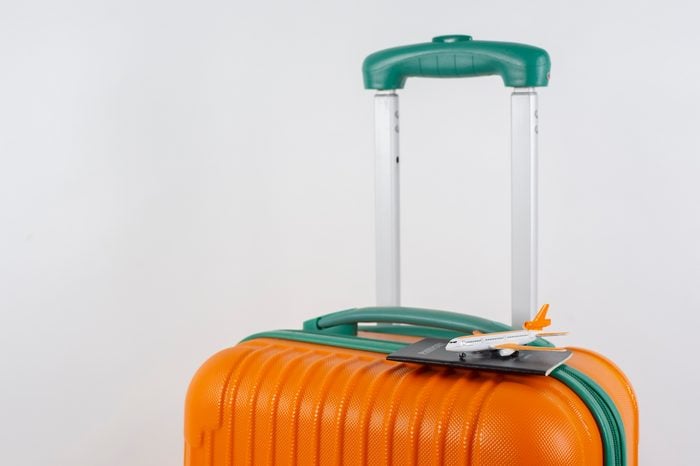
Checked luggage rules you need to know
Whether you’re traveling for work or jetting off to a dreamy locale, you might stress about making packing mistakes. Beyond not forgetting the essentials, it’s smart to pay special attention to the TSA carry-on rules—the TSA liquid limit included—so you can get through the airport security check quickly. Here is what the occasional SSSS on boarding pass means. You’re probably also wondering, What are the prohibited items in checked baggage? After all, you don’t want Transportation Security Administration (TSA) agents rifling through your bags if you can help it—or worse, having some of your things end up in the bin of TSA confiscated items.
Well, we have good news for you. “People think that TSA just randomly opens up bags here and there—that is not the case,” says Lorie Dankers, a TSA spokesperson for the Western U.S. region. “We rely on technology to look for certain things.”
Which things, exactly? We spoke to both the TSA and Federal Aviation Administration (FAA) to find out what prohibited items in checked baggage you should avoid packing to make sure you stay on the right side of their checked-luggage rules.
Get Reader’s Digest’s Read Up newsletter for more travel tips, holidays, humor, cleaning, tech and fun facts all week long.
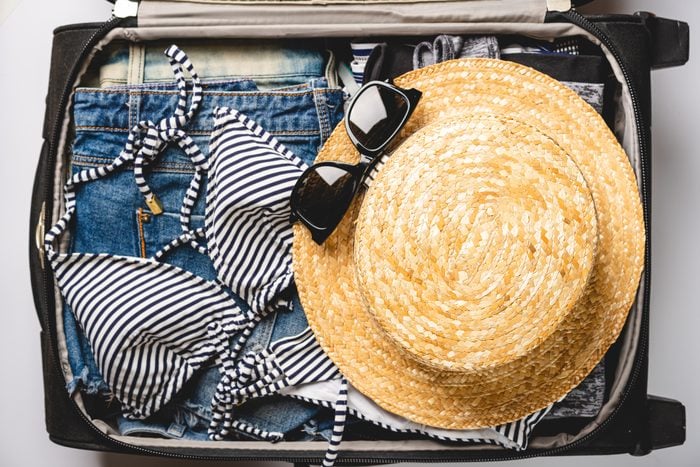
What is allowed on a plane in a checked bag?
In general, TSA rules for checked luggage are much more lenient than for carry-ons, so you can pack everything from drinks and other liquids well over 3.4 ounces to certain types of weapons. That’s because at the security checkpoint, whether it’s the carry-on X-ray machine or the body scanner, agents are looking for anything that could be used to threaten the safety of passengers or crew members. With checked baggage, TSA agents are looking for something a lot more specific.
“Our screening procedures [in checked bags] focus on detection of explosives, explosive components and explosive residue,” says Dankers. “We don’t want anything to get into the belly of the aircraft that could explode and be catastrophic.”
Agents can figure out what most things are using the TSA’s high-tech checked baggage inspection system (CBIS), which is equipped with an explosive detection system (EDS) that creates 3D X-ray images of your bag’s contents. Anything that’s potentially flammable or explosive will be removed. Items that agents are unsure about will be flagged for up-close inspection. In both scenarios, your bag will end up with a little “Notice of Inspection” tag on it. But, adds Dankers, “EDS does clear the vast majority of bags. Less than 5% need to be opened for physical inspection.”
Dankers adds that other agencies, such as the FAA and Customs and Border Protection (CBP), may have additional restrictions, especially with regard to fresh-food items from other countries. With that in mind, below are some of the prohibited items in checked baggage that will get flagged by the TSA.
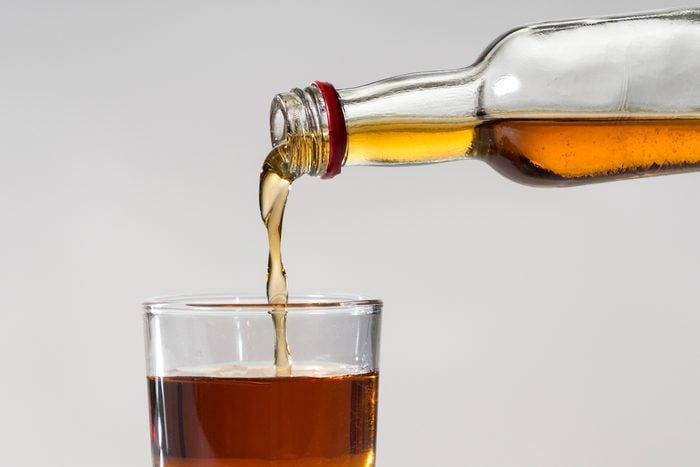
High-proof alcohol
It’s OK to pack most alcohol, whether it’s wine or hard liquor, in checked luggage, as long as it is in its unopened retail packaging. But one of the prohibited items in checked baggage includes anything over 140 proof (70% alcohol), because it’s more flammable. King of Spirits Gold Absinthe is a strong liquor that’s 140 proof, while other types such John Crow Batty Rum, Everclear and Golden Grain are over the allowed amount. Standard wine, hard cider, saké, tequila and vodka are a few alcohol types that typically fall under 70%, but always make sure to check!
“Flammable liquids pose a risk to aircraft,” explains Donnell Evans, a spokesperson for the FAA, “and the risk increases with volume.” That’s why you can’t make the travel mistake of packing an entire case of that amazing Napa or Sonoma wine. The FAA restricts each passenger to five liters (1.3 gallons) of alcohol.
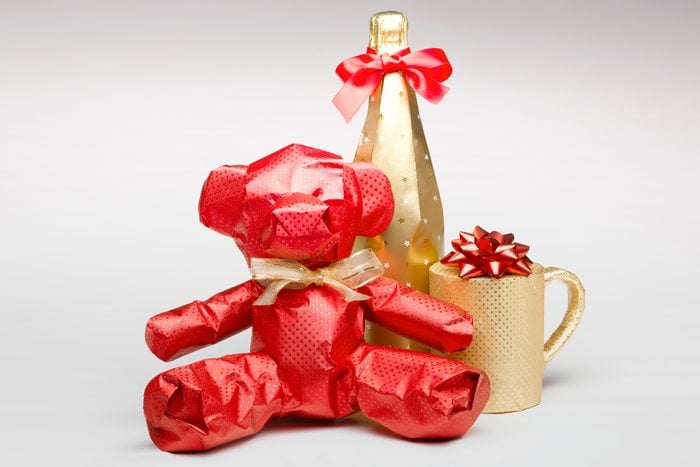
Wrapped presents
One unexpected holiday travel tip when it comes to prohibited items in checked baggage? Wrapped presents, because TSA’s threat detection system relies on being able to “see” what each item is, and wrapped gifts can trigger the need for additional inspection. “If the gift needs further inspection, the TSA inspector will unwrap it,” Dankers says. “Rather than [risking this], don’t wrap it at all, or put it in a gift bag for quick inspection.”
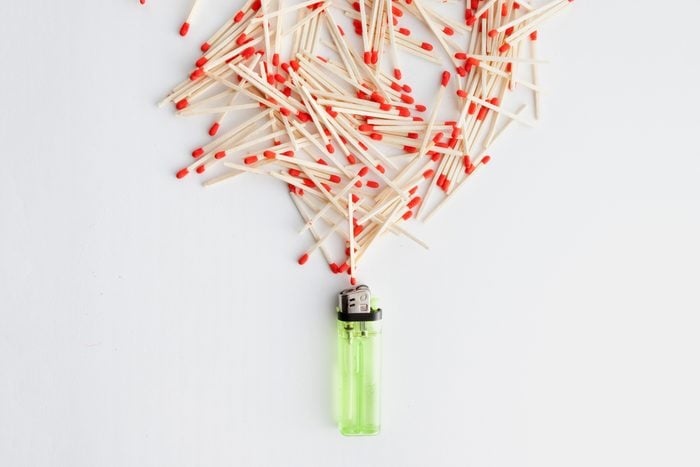
Lighters and matches
The only lighters permitted in checked luggage are those without fuel or those contained in a Department of Transportation–approved case, also called a DOT case. In carry-ons, however, you’re permitted to bring one lighter or one packet of safety matches. Take note: Matches are not permitted in checked bags at all, though, and strike-anywhere matches are forbidden anywhere on a plane.
“Lighters and matches pose a greater threat in checked baggage because an unintentionally started fire can be more easily extinguished inside the aircraft cabin [than in the luggage hold],” Evans explains. So whether you need them to start a campfire for s’mores or to indulge that habit you’re still trying to quit, it’s best to bring these items in your carry-on bag.
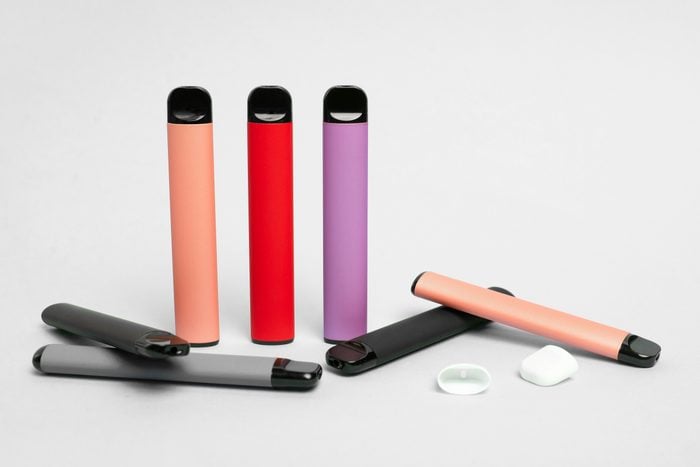
E-cigarettes and vapes
These cigarette substitutes are not allowed in checked luggage under any circumstances because they contain lithium batteries, which are flammable. “There have been several incidents of fire, smoke or extreme heat due to e-cigarettes and vapes,” Evans says. He further explains that should a lithium battery spark a fire, it is more easily extinguished in the cabin of the aircraft. So stash your vapes in your carry-on bag, but check with your airline to see if it restricts the number of devices you may bring.
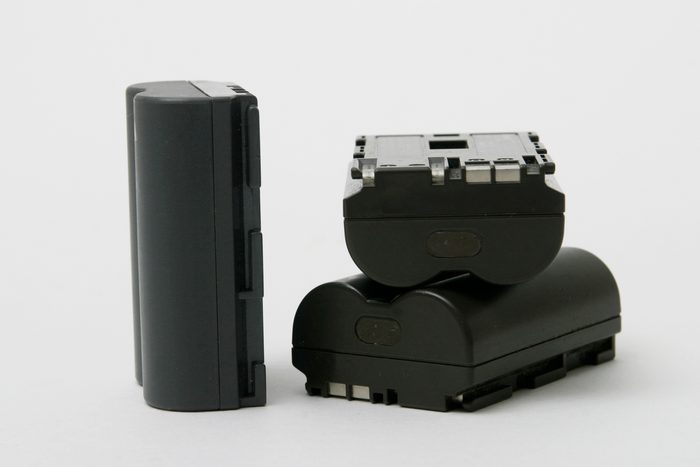
Lithium batteries
Speaking of explosives, these types of batteries have been known to explode mid-flight, so they’re now prohibited unless they’re contained in a device that offers protection. That means you can pack an electronic toothbrush or a camera that contains a lithium battery, but if it’s just a pure battery—like a power bank used to charge cell phones, or a spare laptop battery—it needs to go in your carry-on bag. To note, this type of battery is often used in smart luggage with built-in charging ports. If your suitcase has this feature, you’ll need to remove the charger before you check your bag. Here are other electronics that contain lithium batteries:
- E-cigarettes
- Laptops
- Smartphones
- Tablets
- Cellphones
- Digital cameras
- Game controllers
- Smartwatches
- eReaders
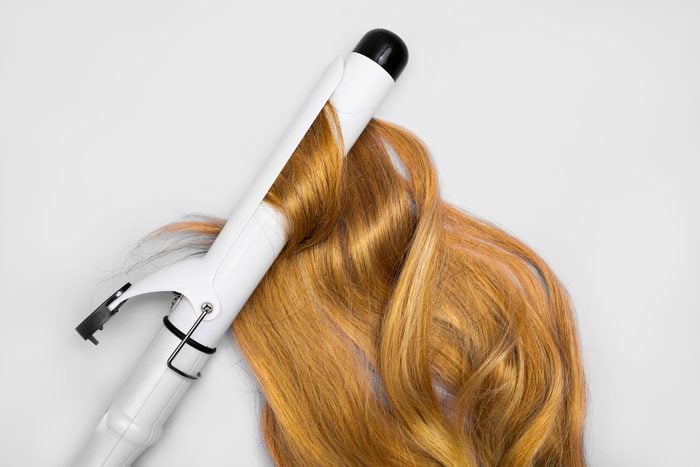
Cordless curling irons
These contain a butane-powered cartridge, which is at risk of exploding mid-flight. Bring your old-fashioned corded curling iron instead—or learn how to curl your hair without a curling iron.
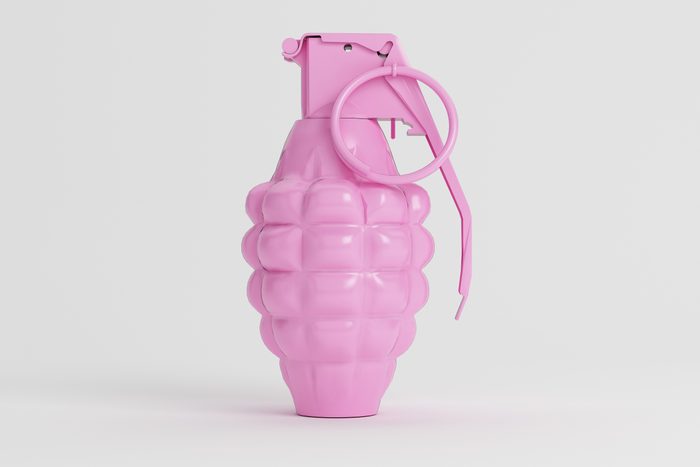
Certain novelty items
Dankers says she’s seen an item sold in at least one airport gift shop that looks like an inert grenade, but with little legs and antennae attached, so it resembles a bug. You may not want to buy these kinds of souvenirs, as they will definitely get you flagged for inspection. However, once the TSA determines that the object poses no threat, the item will be placed back in your bag—along with that little notice of inspection.
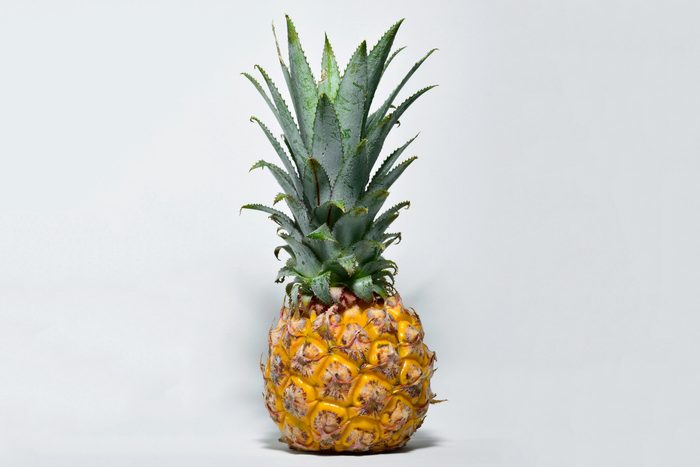
Meat and produce
If you’re traveling domestically, you can generally pack any food you want in your checked bag—as long as TSA can easily determine what it is. But if you’re returning from a trip abroad, think twice before bringing home that amazing Eastern European salami or those juicy tropical mangoes. CBP prohibits the importation of most meat, fruits and vegetables to prevent the introduction of pests and diseases to the United States. Before heading home, it’s a good idea to check with CBP to make sure your souvenir won’t be problematic.
If you’re wondering about coffee, TSA and CBP agents won’t bat an eye if it’s in your checked bag. Sure, we’ve all heard the stories about people trying to disguise the scent of cannabis or other federally illegal drugs with coffee, so the TSA agents at airport security may give a carry-on bag with coffee a little extra attention, but when it’s packed in a suitcase, there’s no concern. So bring home those single-origin coffee beans, whether ground or whole, and enjoy the flavor of vacation in every sip.
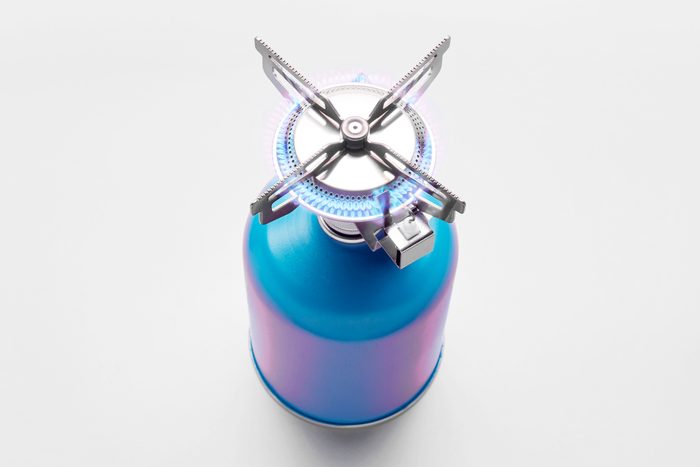
Camp-stove propane canisters
Speaking of camping, you can’t bring this common but highly flammable fuel in your luggage either. However, if you acquire some propane canisters on your trip and use them up, you can safely pack the empties in your luggage to recycle or refill later. “Empty canisters that have been properly cleaned, purged and no longer contain any residual fuels or vapors are not considered dangerous goods,” Evans explains.
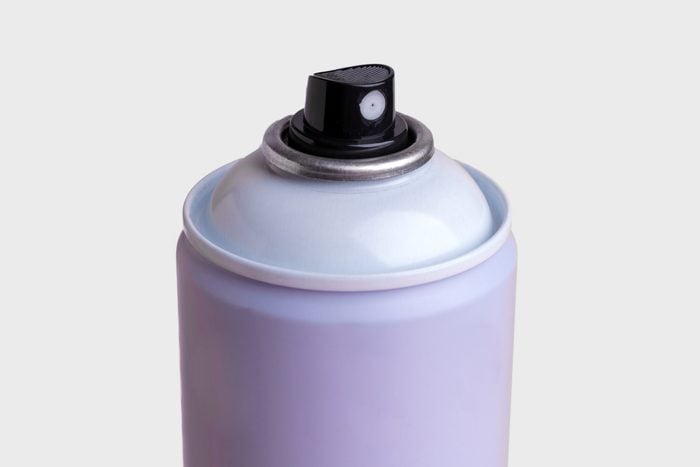
Aerosols and compressed gases
This includes things like bear spray for your backpacking trip, fire extinguishers, spray paint, cooking spray and even spray starch. “If that bear spray were to go off in checked luggage, it would get into the system of the aircraft, and it would affect baggage handlers, crew and passengers,” Dankers explains. However, you are allowed to bring personal-care products, such as deodorant and hairspray, in aerosol containers.
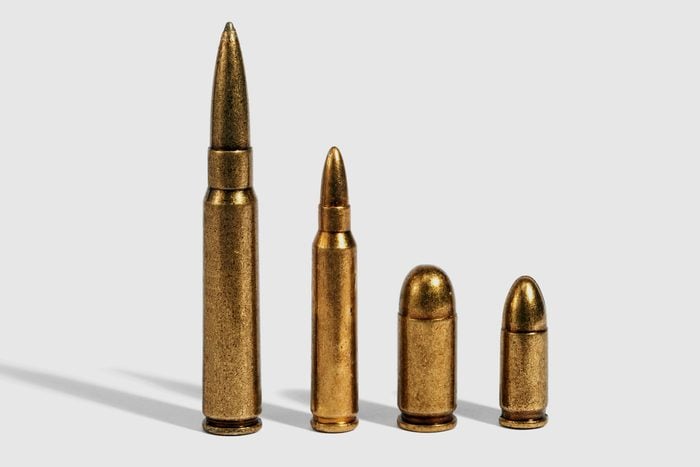
Ammunition
Go ahead and pack your (legal) guns in your checked bag—the TSA permits them as long as they’re packed in a locked hard-sided container and declared to the airline at check-in. When it comes to ammunition, however, the rules are a bit stricter, and if you don’t follow them closely, your luggage could get flagged.
The TSA and FAA both permit ammunition up to .75 caliber and shotgun shells of any gauge, but it must be packed in a box specifically designed for this purpose, and you must declare it to your airline. International regulations, along with some U.S. airlines, limit the amount of ammo you can travel with to 11 pounds per passenger. Other types of ammunition—including black powder, smokeless powder, primers, percussion caps or homemade powder and ball loads for muzzle loading—are all prohibited by the FAA.
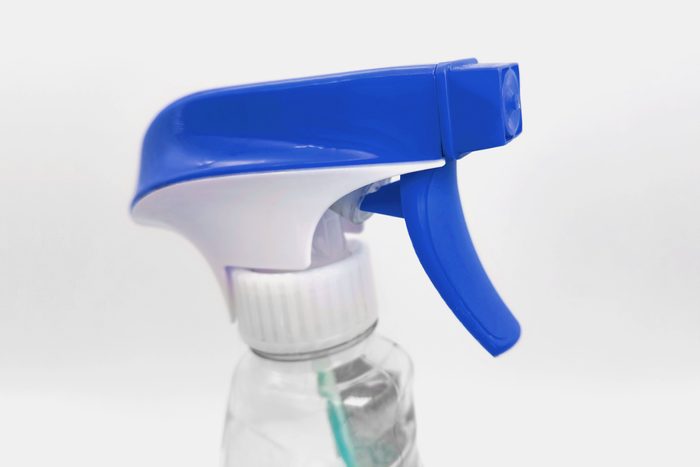
Ammonia and bleach
Sorry, clean freaks—you can’t pack ammonia or bleach to sanitize that Airbnb. Buy it when you land so the TSA doesn’t flag your luggage. While neither one is flammable on its own, ammonia can be explosive when mixed with other chemicals, and bleach is considered an oxidizer, which can make a fire start more easily and spread more quickly. As a result, both are prohibited as hazardous materials.
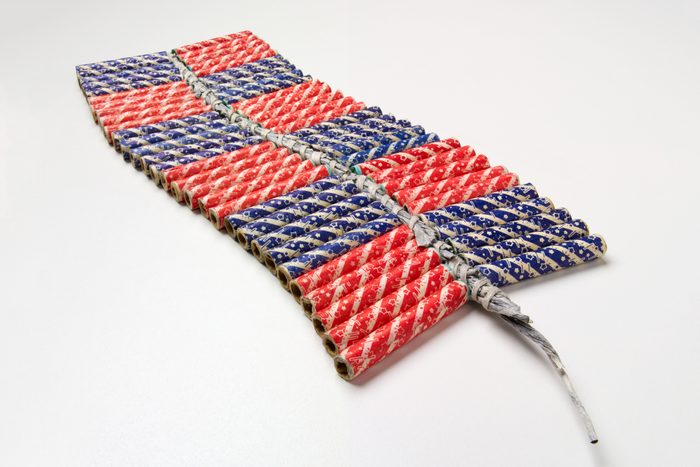
Fireworks
Leave the fireworks at home—they are, quite literally, explosives. Dankers says TSA sees an increase in attempts to transport these every year around the 4th of July, and, of course, you can see why this could be a problem on an airplane.
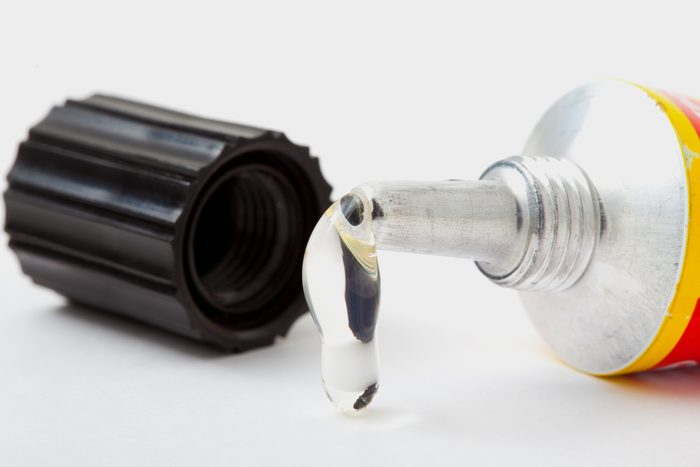
Specialty glue
While white school glue is fine, other specialty glues and pastes, such as model glue, rubber cement and some superglues, are highly flammable and therefore prohibited in checked bags. “Different adhesives include a wide range of chemicals—some are flammable,” Evans says. To see if the one you want to pack is flammable, Evans advises checking the product label or the manufacturer’s safety data sheet. To really be on the safe side and avoid having your bag flagged for inspection, just don’t pack glue.
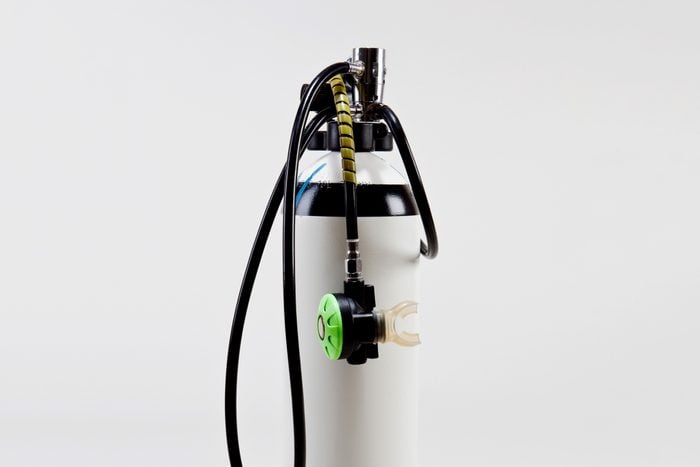
Pressurized air tanks
If you’re going on a big scuba vacation, it’s probably best to rent supplies at your destination. If you try to pack a pressurized air tank, your luggage won’t make it through TSA. “All cylinders (including scuba tanks) containing air or other nonflammable, nontoxic gases are regulated as hazardous materials once they reach a pressure of 200kPA at 68 degrees,” Evans says. Empty scuba tanks are OK, but be prepared to open the valves for your airline.
Similarly, compressed or liquid forms of oxygen—including those trendy flavored O2 canisters marketed for use at high altitudes—are highly flammable and not allowed in checked or carry-on bags. If you need oxygen for a medical condition, you’ll need to pack a portable oxygen concentrator. Rather than compressing oxygen, this type of system separates ambient oxygen from nitrogen and other gasses in the air and delivers the oxygen to a user in a continuous flow.
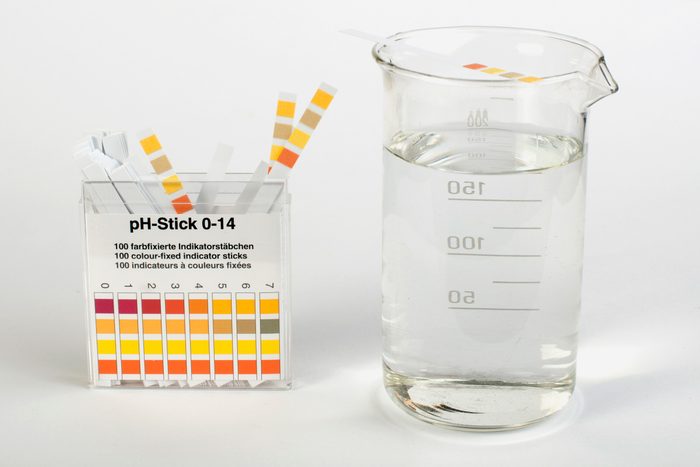
Chemical kits
These include kits for testing water or soil, as well as kids’ chemistry kits. Any chemicals that could explode—such as corrosives, oxidizers and organic peroxides—are banned from checked luggage as well as carry-on bags. So if you want to help your aunt test her soil before planting a garden, or you want to test the water quality at your vacation getaway, have these tests sent directly to your destination.
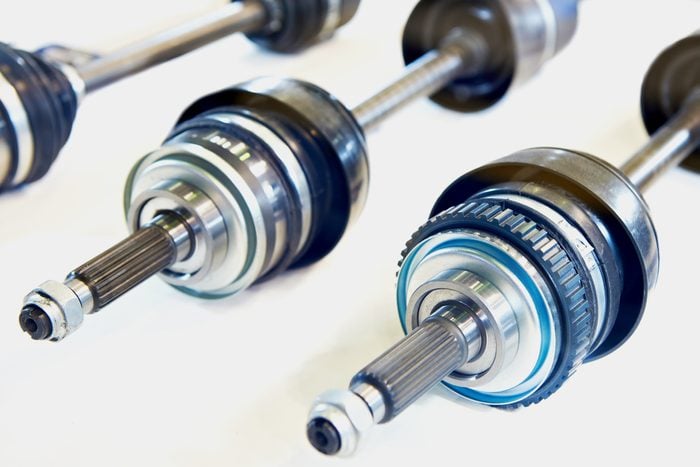
Car axles
Yep, the TSA has seen it all. Occasionally, people will pack a car axle in their bags. “It’s OK to travel with,” Dankers says, but “it looks really odd on the X-ray screen.” So TSA agents will most likely open up your suitcase if they see this—or anything else they can’t visually identify—and swab for explosive residues. Once it’s determined that the item poses no threat, it will go back in your bag and be on its way to your destination.
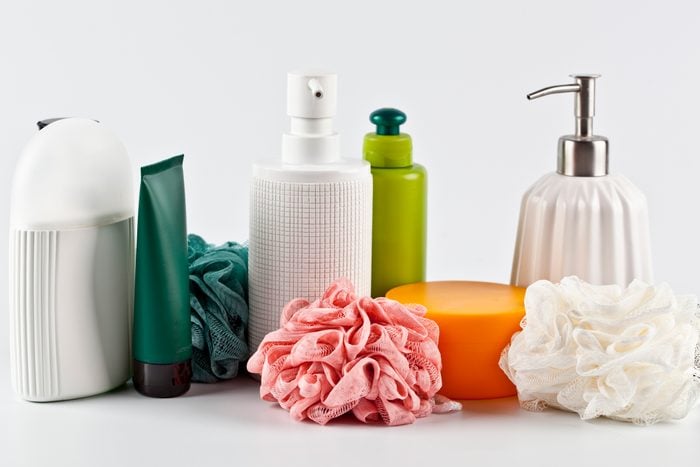
Can I bring full-size shampoo in checked luggage?
As noted earlier, there’s no rule for liquids (except for alcohol) in your checked bags. That said, just because you can pack your full-size liquid toiletries in your suitcase, it doesn’t mean you should. Baggage is not handled daintily, and no one wants to spend the first day of their trip washing the exploded bottle of body lotion out of their clothing. Besides, if those bottles are heavy, they may cause you to exceed the weight limit for checked bags.
Is the TSA looking for drugs in checked luggage?
“TSA, in the course of screening, is not looking for drugs. We’re focused on security threats,” reiterates Dankers. “[But] if we come across anything that is illegal on the federal level, we have no choice but to notify airport law enforcement, and then it’s up to their discretion what they want to do with that situation.”
How heavy can a checked bag be?
The TSA does not set weight limits for checked bags, but airlines do. The maximum allowable weights vary by airline, and sometimes by status or type of seat purchased. Generally, they range from 40 to 70 pounds for both domestic and international flights. You can avoid overweight fees (or doing the last-minute shuffle of items from your luggage to your carry-on at the check-in counter) by using smart luggage that automatically calculates the weight of your haul as you pack.
What else can I take on a plane in checked luggage?
To find out more about the prohibited items in your checked baggage, download the MyTSA app and visit the FAA’s PackSafe for Passengers site. You can also ask the TSA directly on Facebook Messenger or Twitter at @AskTSA.
For a different kind of luggage mishap on your flight, find out how to get a lost luggage reimbursement, just in case your bags don’t make it to their destination.
About the experts
- Lorie Dankers is a TSA spokesperson for the Western U.S. region, where she discloses information about the TSA’s procedures and programs.
- Donnell Evans is a public affairs specialist for the office of communications at the Federal Aviation Administration.
Sources:
- Transportation Security Administration: “What Can I Bring?”
- Federal Aviation Administration: “PackSafe for Passengers”
- U.S. Customs and Borders Protection: “Prohibited and Restricted Items”
- Transportation Security Administration: “Can you pack your meds in a pill case and more questions answered”
- Alcohol Rehab Guide: “Types of Alcohol”
